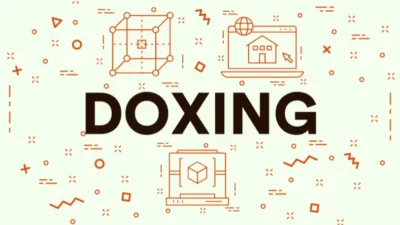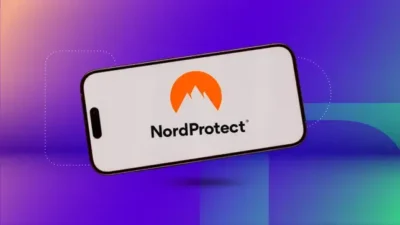Imagine this: you’re enjoying your morning coffee, casually checking your email, when you come across a subject line that stops you cold: “Your password has been exposed and is circulating online.”
This isn’t a scam. It’s the reality that millions of people have unknowingly faced — often without any warning. And yes, it could include you.
If you’ve ever used the same password on multiple websites, registered for services like Twitter (now X), LinkedIn, or even just a random online store years ago, it’s time to ask yourself:
“Is my password out there on the internet?”
How Passwords Get Leaked (and Why You May Never Know)
Data breaches aren’t always dramatic. There’s usually no flashy hacking montage, no warnings. They’re often quiet, unnoticed leaks from massive online platforms — Dropbox, Adobe, Facebook, or X (formerly Twitter) — or from smaller, long-forgotten websites and apps.
In early 2025, a major breach at X (Twitter) exposed over 200 million user records. Not long after, an even larger dataset surfaced online, containing up to 2.8 billion records, allegedly including usernames, email addresses, account IDs, and possibly passwords.
These stolen credentials often end up on the dark web, where they’re sold, traded, or simply shared among hackers.
What Can Someone Do with Your Leaked Password?
A lot — and none of it’s good:
- Log into your email and reset access to other services
- Take control of your social media accounts
- Access paid services like Netflix, Spotify, or gaming platforms
- Make purchases using saved credit card information
- Steal personal files from your cloud storage
- Impersonate you in phishing attacks
If your password is the same across platforms, you’re vulnerable in more ways than you think.
Use This Tool to Check If Your Email Has Been Leaked
Fortunately, there’s a fast and secure way to find out if your credentials were exposed in a data breach. Enter your email into the tool below and get instant results.
✅ It’s private, free, and takes less than 10 seconds.
👇 Try it now:
What To Do If Your Email Is Involved in a Breach
If the tool shows your email has been compromised, don’t panic — act.
- Change your password immediately, especially on other platforms where it’s reused.
- Enable two-factor authentication (2FA) to add an extra layer of protection.
- Check your accounts for suspicious activity, especially email and cloud storage.
- Sign out of all active sessions from your devices.
- Monitor for unauthorized logins or password reset attempts.
- Warn friends or coworkers if you think your account could be used to impersonate you.
Real-World Scenarios That Actually Happened
🎬 Scenario 1: Netflix Account Hijack
A U.S. user noticed strange titles in his Netflix watch history — in Spanish, which he didn’t speak. Turns out his account email had been changed, and he was locked out.
The cause? His password was exposed in a 2019 online shopping data breach.
🎮 Scenario 2: Gaming Account Takeover
A teenager lost access to his Steam account, along with $400+ worth of purchased games. Support found that someone had enabled 2FA using a foreign phone number.
Root cause? He reused a password that had been leaked years ago.
Top 10 Most Common Leaked Passwords
Millions of accounts share the same weak passwords. Here are the most frequently leaked:
- 123456
- password
- 123456789
- qwerty
- 12345678
- 111111
- 123123
- abc123
- password1
- 000000
If any of these look familiar — change them immediately. And never reuse passwords.
Credential Stuffing: The Hidden Threat Behind Password Reuse
Today’s hackers don’t try every password manually. They use automated bots to run credential stuffing attacks, where your email is tested with known leaked passwords across thousands of platforms.
So if your email-password combo was leaked once — even years ago — they’re probably still testing it.
What Does a Strong Password Look Like?
It should be:
- At least 12 characters
- A mix of letters, numbers, and symbols
- Unique to each site
- Not based on personal info (name, birthday, etc.)
Example of a strong password:Gh!47xRTz!vD#2025
This is why most people turn to password managers.
Recommended Tools for Securing Your Passwords
| Tool | Highlights | Cost |
|---|---|---|
| Bitwarden | Open-source, secure | Free / $10/yr |
| 1Password | Intuitive, family plans | From $2.99/mo |
| NordPass | Easy to use, by NordVPN | From $1.79/mo |
| KeePassXC | Offline, full control | Free |
These tools generate, store, and autofill strong passwords so you never have to remember them.
Staying Safe Online
- Use a password manager for every account
- Enable 2FA wherever possible
- Regularly check your emails for breaches
- Avoid public Wi-Fi without a VPN
- Stay alert to login notifications and new device access
Final Thoughts: Don’t Wait Until It’s Too Late
The internet isn’t dangerous by default. But complacency is. A leaked password can expose your money, memories, and identity — sometimes in ways you’ll never see coming.
Checking your password today takes less than a minute. But the peace of mind? That lasts a lot longer.
Frequently Asked Questions (FAQ)
How often should I check if my credentials were leaked?
At least twice a year, or immediately after major security news.
Is it safe to enter my email into leak checkers?
Yes — with trusted services like Surfshark, it’s encrypted, anonymous, and not stored.
What should I do if my password is found online?
Change it, activate 2FA, and scan related accounts for suspicious logins.
Can a VPN help protect my passwords?
Absolutely. A VPN encrypts your connection, especially on public networks, and blocks tracking and sniffing attempts.





